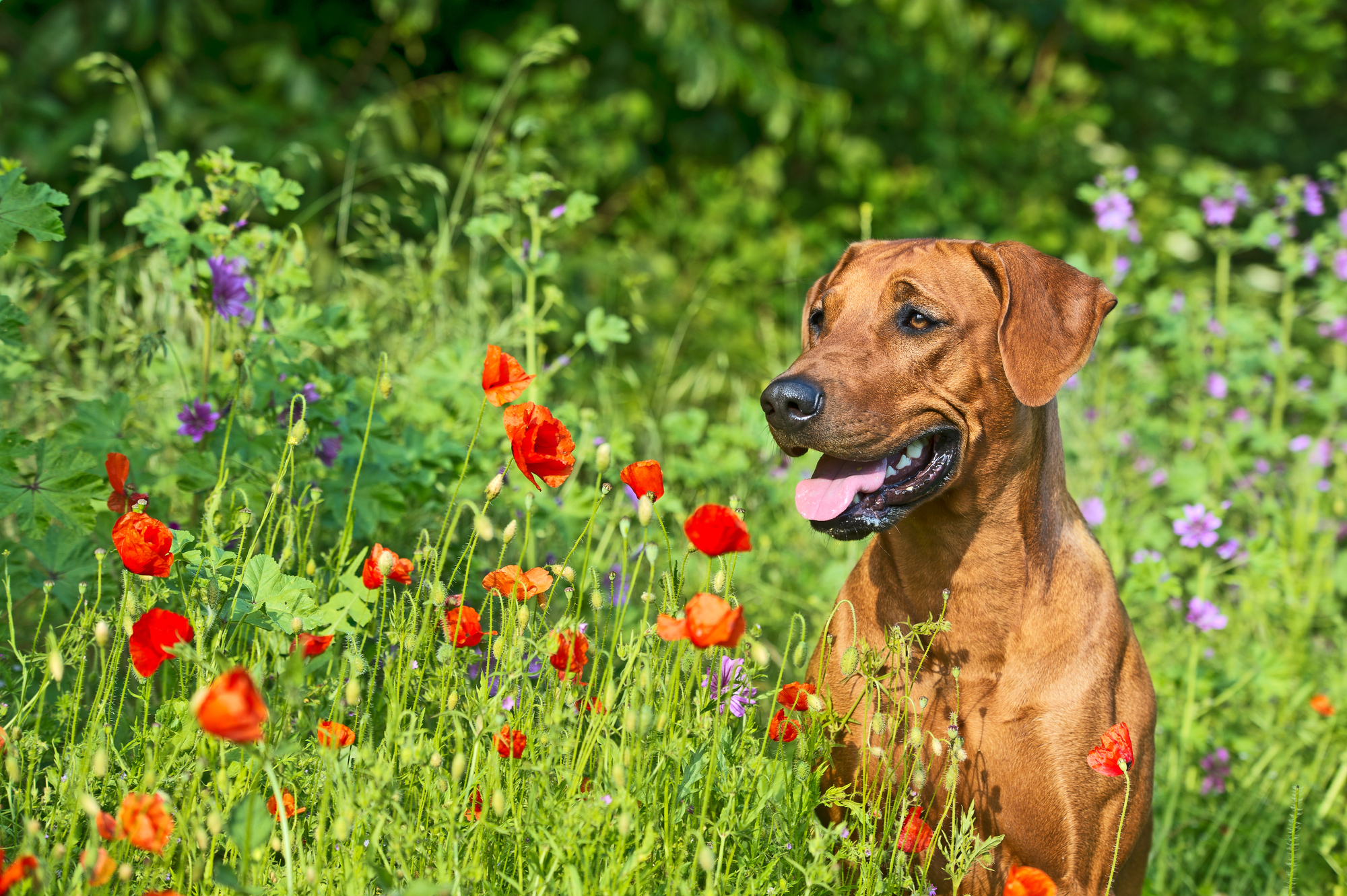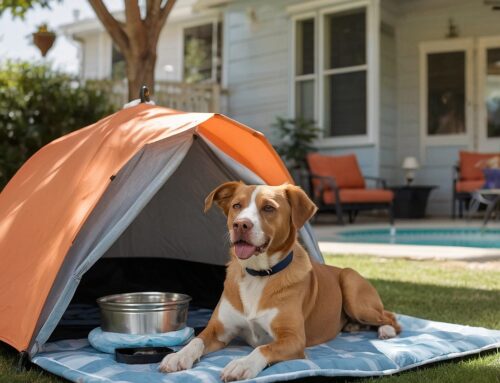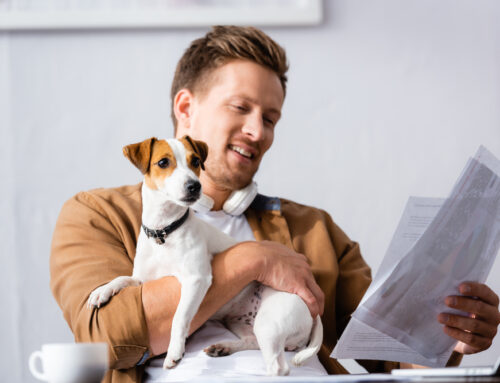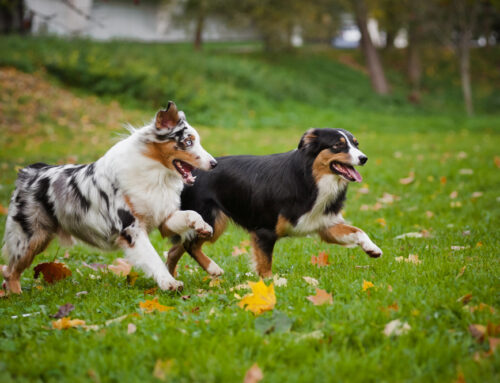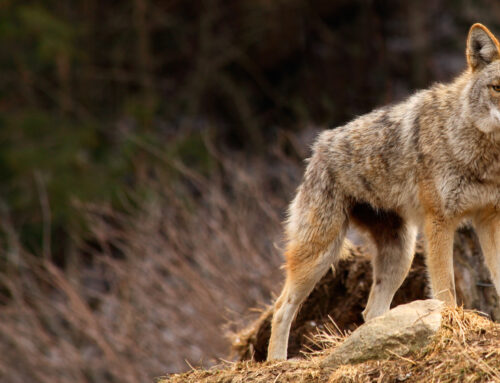Now that summer is here, you and your dog are likely outdoors more than ever, and while that usually means more fun and playtime, it’s also a time to raise awareness with regard to safety. We have broken these down into three main categories:
- Dangers or conditions that exist in nature harmful to dogs
- Artificial or man-made hazards
- Ingested toxic items to dogs
Natural Hazards
Let’s face it: the natural world is risky at times to every species of animal, including humans, but most people are at least aware of the dangers around them and typically take precautions. Dogs tend to be more happy-go-lucky, which can get them in trouble if they’re in the wrong place at the wrong time.
Depending on the environment, other animals can be particularly pernicious and/or even insidious. Consider jellyfish, crabs and other animals at the beach and/or in seawater, for example. There are also flying, jumping and crawling insects, which can include ticks, fleas, worms and other parasites that can bite, sting or affect a dog/s gastrointestinal tract which may lead to disease. The best defense for these is often keeping up-to-date on your dog’s vaccines, and after each outing, a physical inspection of your dog’s fur and paws. And remember, regular checkups by a vet to make sure your pooch stays healthy.
Extreme heat or cold can be dangerous for dogs; heatstroke and frostbite are very real phenomena that can afflict your pet, so make sure that he or she isn’t left outside in temperatures that could be harmful. On hot or cold days, take the necessary precautions to keep them healthy, happy and safe.
Remember that while some natural hazards are found in the wild — in woods, on beaches, in fields and on hiking trails — others can be as close as your own front or backyard. Sharp rocks, wood splinters and foxtails (see our previous article about them) abound everywhere, so check your dog’s paws and coat regularly to make sure he or she doesn’t have a cut or injury that could become infected.
Last but not least, one danger of the outside world is the potential for your pup to get lost, taken or stolen. If you take your pup on a holiday or to an unfamiliar place, this can happen all too easily, so make sure your dog has been microchipped and has tags before they’re allowed to go outside and to faraway places.
Man-Made Hazards
Summer is a time for barbecues, and while these can be happy times for you and your pup, be aware of the hazards they can present for dogs; grills, hot coals, fire, children and potentially toxic food (see below) can all present risks to our tail-wagging friends. Be sure to keep an eye on your dog, and know in advance if any other dogs or children will be there. Make sure that everyone knows which foods not to give to your dog.
Often going hand-in-hand with barbecues, swimming pools can also be dangerous for our furry friends. While this blog featured a previous article about pool parties for dogs, not every dog is pool-friendly; for some dogs, pools can be a real hazard, so make sure your dog not only is a good swimmer but knows how to get out of a pool. With other bodies of water, like ponds, lakes or oceans, the same precautions apply; make sure your dog won’t get swept out to sea by a riptide, and if you really want to be safe, have him or her wear a life-vest.
Poisonous/Toxic Items
Whether our dogs are being walked on a leash or are roaming free, there will often be items they encounter that will look, smell or taste like food. These are may be dangerous because they can be poisonous to your pup. Spoiled or rotten food, hazardous plants and contaminated liquids and water can all be very toxic.
Here is a brief list of foods your dog should avoid consuming, with some reasons why:
- Seeds, stems and leaves of apricots, apples, cherries, plums and peaches — In large amounts, these contain a compound like cyanide that’s poisonous to dogs.
- Leaves, fruit, bark and seeds of avocados — These contain a toxic fatty acid derivative called persin, which is toxic for dogs.
- Baking soda and baking powder — In large amounts, these can cause muscle spasms, congestive heart failure and/or abnormalities with electrolytes in dogs.
- Some bones — Not all bones are safe for dogs; many can create constipation, bacterial contamination and splinters that lead to internal bleeding. A guide to which bones are safe is here.
- Bread dough — Bread dough contains yeast, which can expand in dogs’ stomachs, leading to medical issues.
- Chocolate — Chocolate contains theobromine and caffeine, which in large amounts can be toxic for dogs.
- Coffee beans and grounds — As it is in chocolate, caffeine in these can be an issue for dogs.
- Dairy products — Dogs lack the enzyme required to digest lactose, so these should be avoided.
- Fatty/rich foods — Consuming fatty and/or rich foods (even too many treats in some cases) can lead to pancreatitis in dogs, which is a particular risk for cocker spaniels, toy or miniature poodles and/or miniature schnauzers.
- Grapes and raisins — These can cause kidney failure in some dogs.
- Onions and garlic — Dogs lack the enzyme necessary to properly digest onions, while both onions and garlic contain thiosulphate, a known toxin for dogs.
- Rawhides — Like some bones (see above), these can cause problems in the digestive tract.
- Table scraps — Avoid feeding these to dogs, particularly if they’re rich or fatty (see above); not all breeds of dogs can tolerate them.
- Foods containing Xylitol — This sugar substitute can be found in baked goods, chewing gum, peanut butter and diet foods. In dogs, Xylitol can cause low blood sugar and liver failure.
In terms of plants, four of the most dangerous plants your dog should avoid ingesting are:
- Sago Palms — Also known as cardboard palms, cycads, zymias, and coonties, these contain a toxin called cycasin that can cause liver damage and death in some dogs. It’s worth Google-searching for images of this plant, as some people buy them for their homes.
- Tulips — These contain allergenic lactones that can be mildly toxic for dogs.
- Daffodils — These contain lycorine, which is moderately toxic for dogs.
- Lily of the Valley flowers and their leaves — These contain cardiac glycosides, which are also moderately toxic for dogs.
When out and about, your dog will likely become thirsty. Be aware that many random pools of liquid contain much more than water (or even no water), and can be fetid, polluted sources of toxins, parasites and diseases. It’s a good idea to keep your dog far away from any known sources of these substances, such as industrial sites or waste areas. In general, you should always leave out a container of fresh water for your dog and bring some along when you go for a walk. Many restaurants and cafés are happy to provide water for dogs if they don’t already leave out bowls. It never hurts to ask to have water in these replaced if it looks cloudy, tainted or discolored.
Why Teaching “Drop It” or “Leave It” Is So Important
Dogs are naturally curious animals. But sometimes their curiosity can get them into trouble, which is why it’s so important to get them to discard or not get into unknown substances or dangerous objects. Training a dog to “Drop It!” or “Leave It!” is essential for survival in our modern world.
To train your dog to drop an item, get a low-value toy and a treat. A “low-value toy” should be one that your dog is only mildly interested in. Let your dog pick up the toy for a few seconds, then bring out the treat, so your dog drops the toy in favor of eating the treat. When your dog does this, praise him or her, then give your dog the treat. Repeat this process, but the next time, use the command “Drop It” before your dog drops the toy. After several repetitions, use this command without showing the dog the treat. If your dog drops the toy, reward him or her with many treats. If he or she doesn’t drop the item, try waiting a second between the time you issue the command and the time you show your dog the treat. Gradually increase this time each time you repeat the process until your dog understands that he or she needs to drop the toy in order to get the treat.
For dog owners who have trouble with this training, Performance K9 Training and Boarding offers programs to teach these commands and others. Motivating your dog to either not consume or not get into potentially dangerous items and situations is crucial to keeping him or her safe.



